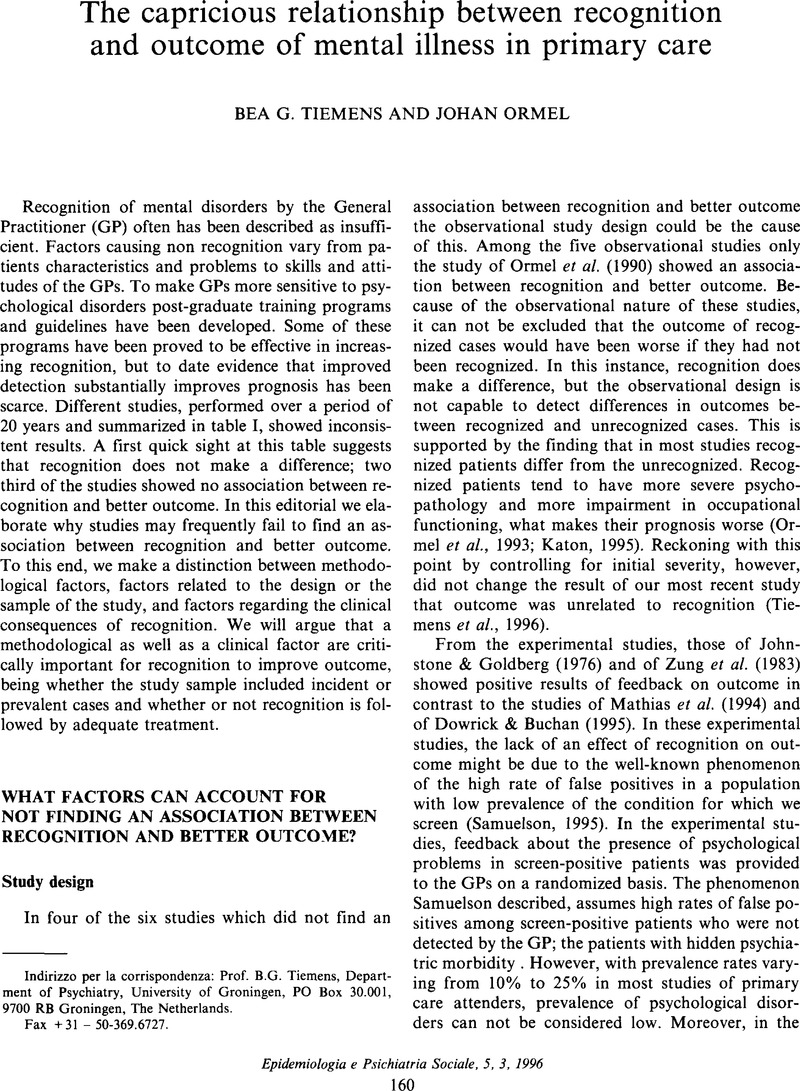Crossref Citations
This article has been cited by the following publications. This list is generated based on data provided by Crossref.
Piccinelli, Marco
1996.
Mental disorders in primary health care: the primary care physician's difficulties.
Epidemiologia e Psichiatria Sociale,
Vol. 5,
Issue. 3,
p.
151.
Herrán, Andrés
and
Vázquez-Barquero, Jose Luis
1999.
Recognition and Treatment of Mental Disorders in Primary Health Care.
Annals of Saudi Medicine,
Vol. 19,
Issue. 4,
p.
383.
Simon, Gregory E.
Goldberg, Sir David
Tiemens, Bea G.
and
Ustun, T.Bedirhan
1999.
Outcomes of recognized and unrecognized depression in an international primary care study.
General Hospital Psychiatry,
Vol. 21,
Issue. 2,
p.
97.





